Views: 636
Tour № 1 – Šventaragis Valley
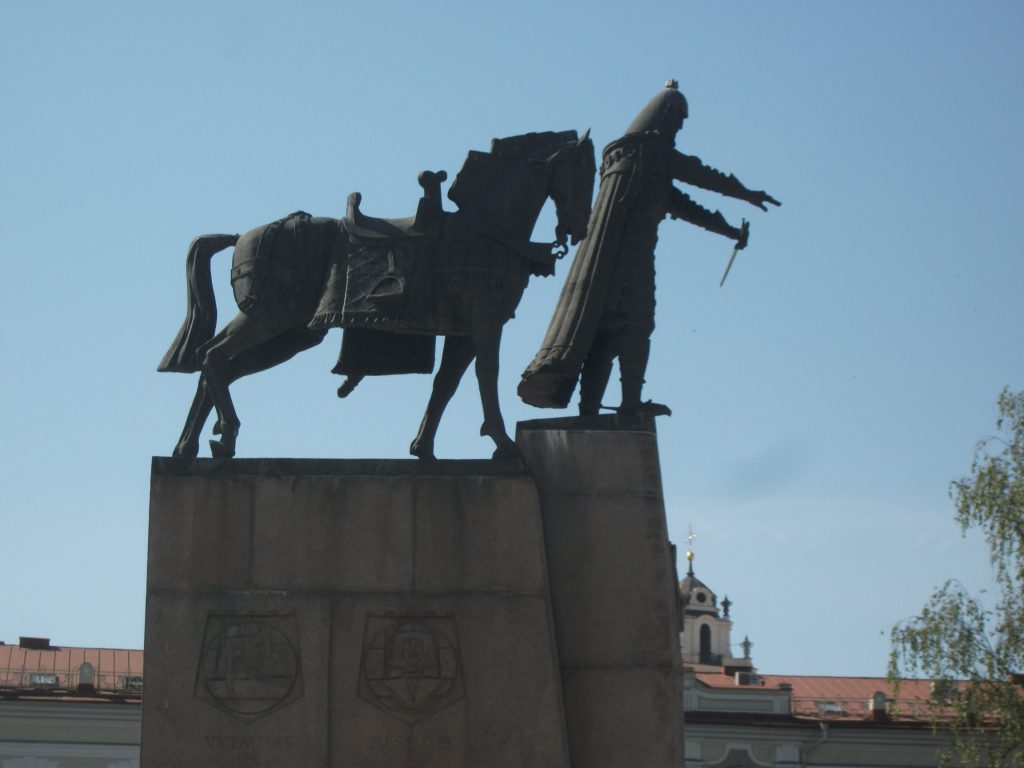
- Cathedral Basilica of St. Stanislaus & St. Vladislaus
- Cathedral Basilica of St. Stanislaus & St. Vladislaus (inside, including the Chapel of St. Casimir, the Chapel of Deportees, the Gasztołd Chapel, the Royal Chapel, St. Wladislaw/Vladislaus/Ladislav Chapel, High alter, Memorial plague to the Grand Duke of Lithuania Vytautas Magnus, the Sapieha Madona’s picture, etc)
- Cathedral Basilica Bell Tower
- Royal Palace of Lithuania (the Palace of Grand Dukes of the Grand Duchy of Lithuania)
- Upper Castle
- Upper Castle’s West (Gediminas) Tower
- Old Arsenal – Museum of Applied Art
- New Arsenal – Lithuanian National Museum
- Monument to King Mindaugas (1236-1263: Crowned King on July 6th, 1253)
- Monument to Lithuanian Grand Duke Gediminas (1316-1341: the founder of Gediminian-Jagiellonian ruling dynasty)
Tour № 2 – Vilnius University & Monastery Quarter
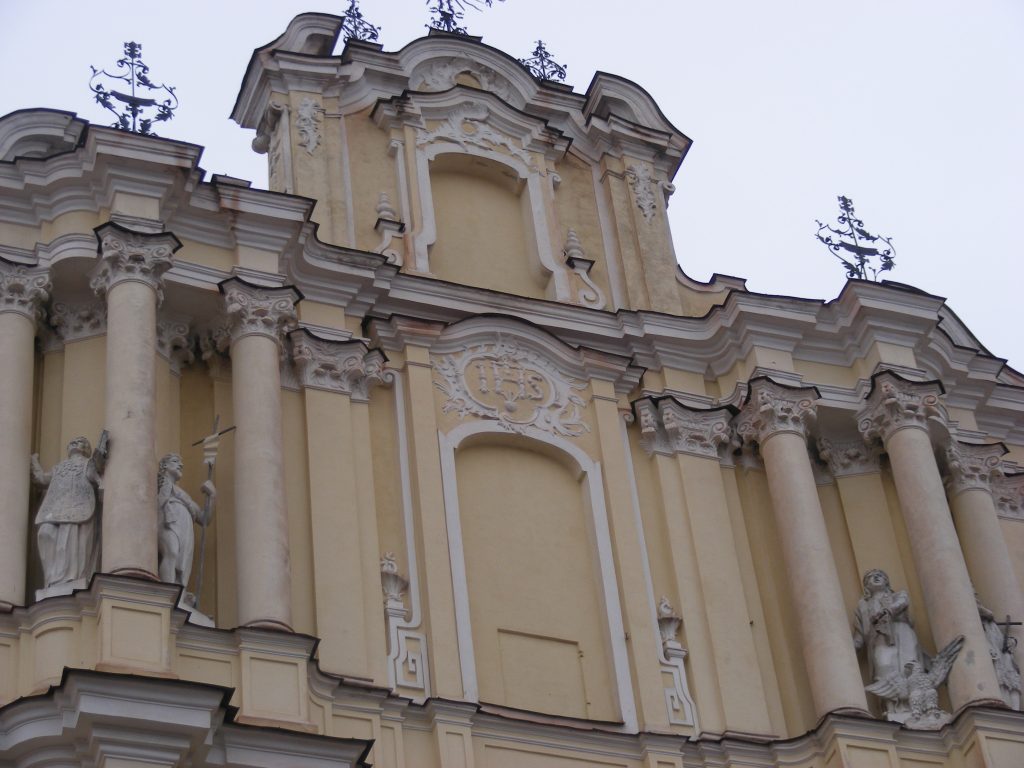
- Vilnius University – Historical Campus (est. 1579)
- Vilnius University – the Bronze door of the Central Library
- Vilnius University – Historical Campus (inside, including 12 university’s courtyards, Domus Philologiae, Smuglevičius Hall, White (Observatory) Hall, Lelewel Hall, Lithuanian Philology Centre, etc)
- Vilnius University – Science Museum
- St. Johns’ Church in the Great (Skarga) university’s Courtyard
- St. Johns’ Church in the Great (Skarga) university’s Courtyard (inside, including Great alter, Altar of Maria of Loretto, Chapel of St. Anne, Altar of St. Victorino, Organ, several memorial plagues and frescos, etc)
- St. Johns’ Church in the Great (Skarga) university’s Courtyard – Bell Tower
- Dominican Street
- University Street
- St. John Street
- Church of the Holy Cross and former Hospitaller Monastery
- Monument to Laurinas Gucevičius (1753-1798)
- Presidential Palace (Prezidentura)
- Alumni (Alumnatas) Courtyard
- Sanctuary of Divine Mercy
- Church of the Holy Spirit and former Dominican Monastery
- St. Ignatius Church and former Jesuit novitiate
- Plaque for Righteous Among the Nations
- Monument to Stanislaw Moniuszko (1819-1872)
- St. Catherine’s Church and former Benedictine Monastery
Tour № 3 – From the Cathedral Basilica to Town Hall Square
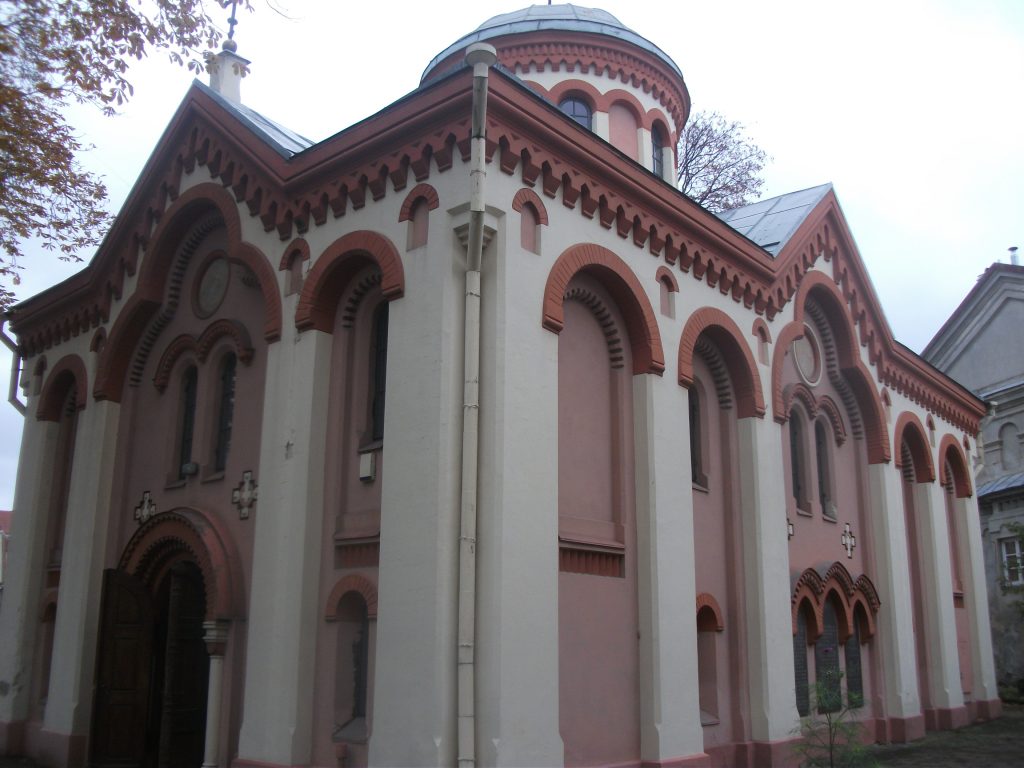
- Buildings of Pilies Street
- House of the Signatories
- Marija and Jurgis Šlapelis House Museum
- Paraskeva Russian Orthodox Church
- Pilies Street souvenir open market – What should you buy in Vilnius
- Buildings of Didžioji (Great) Street
- Vilnius Picture Gallery (Chodkiewicz Palace)
- Stendhal House
- Nicholas Russian Orthodox Church
- Historical Town Hall
- Buildings around the Square of Historical Town Hall
- Former printing house of Francysk Skaryna (1486-1551) – the Magistrate House
- Buildings of Savičiaus Street
- Mikalojus Konstantinas Čiurlionis’ (1875-1911) Memorial Flat Museum
- Church of Blessed Mary the Comforter and the Augustine Monastery
- Kazys Varnelis’ (1917-2010) House Museum – Great and Small Guilds
- Casimir Church
- Buildings of Subačius Street
- Bastion – an artillery fortification
- Church of the Assumption and former Missionary Monastery
Tour № 4 – Quarter of Three Confessions
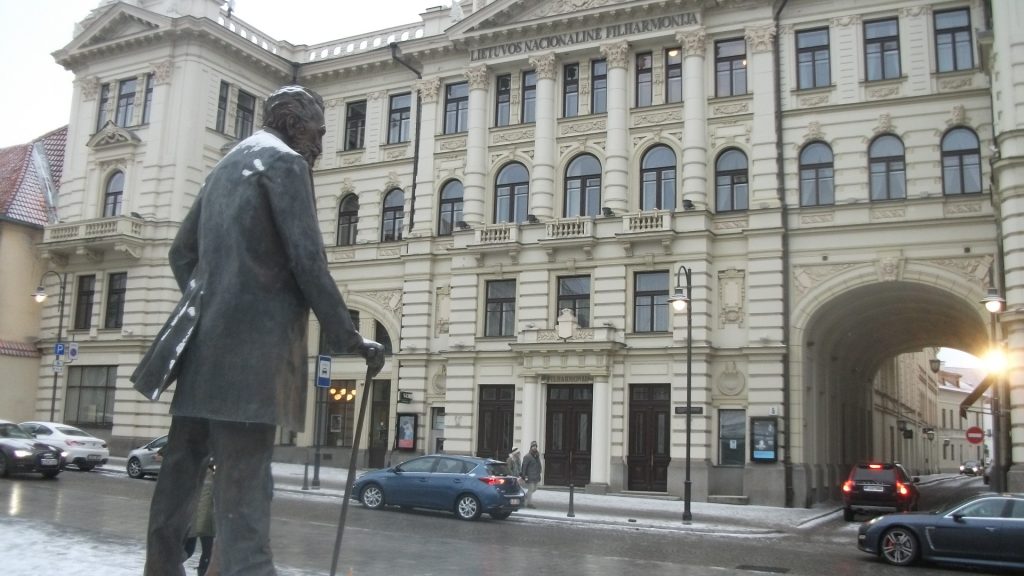
- Buildings of Aušros Street
- Radisson SAS Astorijos Hotel (former Italia hotel)
- Building of National Philharmonic
- Monument to Jonas Basanavičius (1851-1927) on the square in front of National Philharmonic
- Memorial plaque to Ignacy Domeyko (1802-1889)
- Baroque gate to Uniate Church of the Holy Trinity and former Basilian Monastery
- Uniate Church of the Holy Trinity and former Basilian Monastery
- Memorial plaque to Josaphat Kuncevic (St. Josaphat, 1580-1623)
- Memorial plaque on the building of former Basilian Monastery where Adam Mickiewicz (1798-1855) was imprisoned
- Russian Orthodox Church of the Holy Spirit and monastery
- Russian Orthodox Church of the Holy Spirit (inside, including the remains of the Three Vilnius Martyrs kept under a wooden canopy in front of the iconostasis)
- Church of St. Teresa (of Ávila, Spain) and former Carmelite Monastery
- Church of St. Teresa (of Ávila, Spain) (inside, including the church’s mural paintings, the Chapel of Pac’s family’s mausoleum, impressive, gently-curved church’s pulpit and the altar)
- Chapel of the Gate of Dawn (Medininkų Gate)
- The sacred picture of the Holy Virgin Mary in the Chapel of the Gate of Dawn (Medininkų Gate)
- Votive objects in the Chapel of the Gate of Dawn (Medininkų Gate)
- The Gate of Dawn (Medininkų Gate) from the southern side with a Renaissance composition of Vytis
Tour № 5 – Jewish Quarter
- Small and Large Vilnius Jewish Ghettos
- Monument to the Vilna Gaon
- Mark Antokolski (1840-1902) House
- Former Mattityahu Strashun (1817-1885) Jewish Library
- Vokiečių gatvė (German Street)
- Contemporary Art Centre
- „Barbara“ sculpture
- Monument in remembrance of Vilnius Ghetto martyrs and fighters in 1941-1943
- Church of St. Nicholas
- A sculpture of Vilnius Patron Saint Christopher in the yard of the Church of St. Nicholas
- Evangelical Lutheran Church
- Amatų gildija (Artisan guild) open ceramic workshop and gallery
- Former Vilnius ghetto theatre 1941-1943
- Former Gothic façade at Karmelitų gatvę (Carmelite Street)
- Closed courtyards with open galleries, characteristic of Old Town architecture
- Church of All Saints and former Carmelite Monastery
- A section of Vilnius historical defensive wall
- The sculpture named „Egg“
- Monument to Tzemach Shabad (1864-1935)
- Choral Synagogue
- Church of the Assumption of the Holy Virgin Mary and former Franciscan Monastery
- Sculpture of the Holy Virgin Mary (The White Mother of God)
- Suzin’s built Baroque-style family mausoleum chapel
- A monument to Jozef Montwiłł (1850-1911)
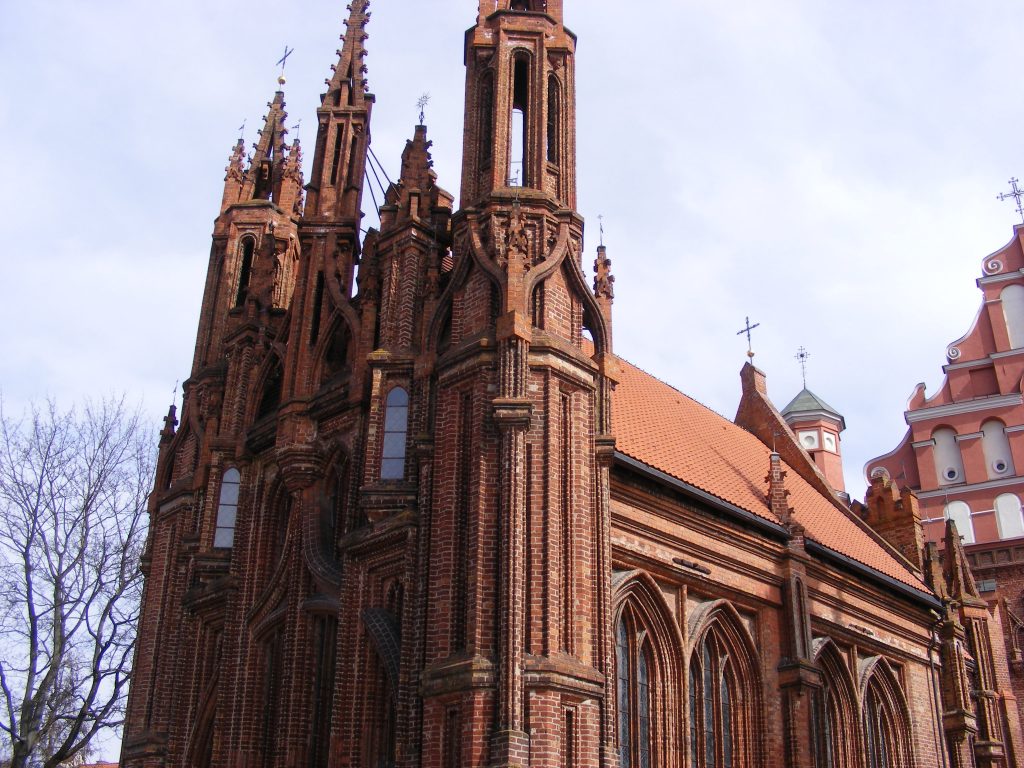
Tour № 6 – Bends of the River Vilnia
- Adam Mickiewicz’s Memorial Flat Museum
- Church of St. Anne
- Church of St. Francis and St. Bernardine
- Chapel of the Holy Steps
- Monument to Adam Mickiewicz
- Church of St. Michael the Archangel
- Adam Mickiewitz’s House
- Sereikiškių Park
- Amber Museum
- Russian Orthodox Church of the Blessed Mother of God
- „Angel of Užupis“ sculpture
- Constitution of the „Republic of Užupis“
- Church of St. Bartholomew
- Bernardinų Cemetery
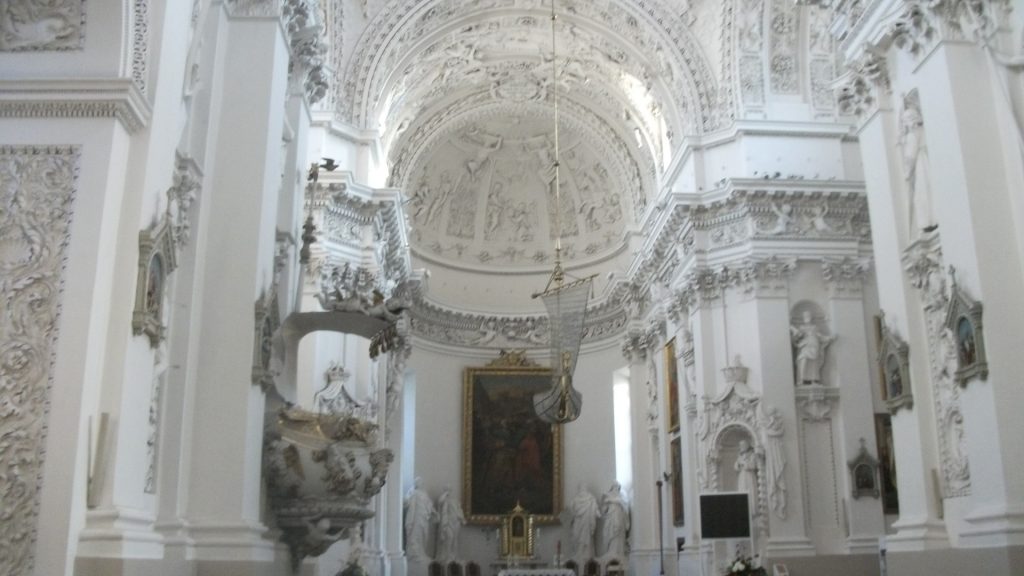
Tour № 7 – City Centre
- Three Crosses Monument on the Three Crosses Hill
- Church of St. Peter and St. Paul
- Petras Vileišis Estate
- Tuskulėnų Park with columbarium
- A building of Lithuanian Energy
- A building of Lithuanian Theatre, Music and Film (A Small Radziwiłł Palace)
- A Great Radziwiłł Palace
- Vilna Gaon Jewish State Museum
- Sculpture or Roman Gary
- A monument to Frank Zappa
- Museum of Genocide Victims (former KGB Headquarters)
- A plaque to Chiune Sugihara
All photos are copyrighted by Vladislav B. Sotirovic
© Vladislav B. Sotirovic 2018

RELATED POSTS
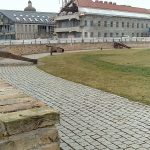
The architect of the Vilnius Bastion is unknown. The building that rose in the early 17th century is attributed to the period of late Renaissance and in that period Vilnius did not have a municipal architectThe wars of the mid-17th century and the 18th century weakened the military power of the Grand Duchy of Lithuania. The army led by the Russian Emperor Aleksey Mikhailovich approached Vilnius in August 1655 and seized the cityWhen Vilnius was liberated in 1660, the city's defensive fortifications needed repair. However, there was not enough funds and the citizens were unable to maintain defensive fortifications, supply them with arms and gunpowder and provide securityAll photos are copyrighted by Vladislav B. Sotirovic© Vladislav B. Sotirovic 2020
Continue Reading
The Town Hall hosted a court, archive, weapons depository, as well as a prison for artisans that had broken the law. Burgomasters also held meetings in the Town Hall, as did the Council of Merchants Since 1991, Vilnius Old Town Hall once again is functioning as a place for holding important events like art exhibitions, concerts, conferences, meetings, etcIn the Middle Ages, the Town Hall Square was a place where physical punishment was carried out. There were gallows and a scaffold nearby, where executions were carried outAll photos are copyrighted by Vladislav B. Sotirovic© Vladislav B. Sotirovic 2019
Continue Reading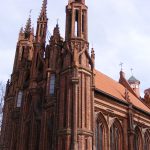
Church of St. Anne (left) and Bernardine Church (right). The church of St. Anne is a unique monument of red firebrick Gothic architecture in LithuaniaSt. Anne Church, designed in 1495-1500 by Benedikt Rejt, built up at the turn of the 15th century, and renovated in 1902-1909. 35 different kinds of brick were used help in creating the church. The façade was reinforced in 1960-1970St. Anne Church - a church which French Emperor Napoleon Bonaparte wanted to put on his palm and carry it over to Paris. The Church of St. Anne is symmetrical, marked by graceful, pointed forms that continue upwardAll photos are copyrighted by Vladislav B. Sotirovic© Vladislav B. Sotirovic 2018
Continue Reading
After being baptized in 1251 into the Roman Catholicism in 1251, Grand Duke Mindaugas built the first cathedral in Vilnius on the site of the present-day Cathedral Basilica (Cathedral of St. Stanislaus and St. Vladislaus). Before that, in pagan times an altar, a sacred fire or even a Perkūnas sanctuary was located on the site of today's Cathedral Basilica The creation of the Lithuanian state started as late as the 13th century. Its first outstanding ruler Mindaugas was baptized in 1251 and crowned King of Lithuania on July 6th, 1253. Today, July 6th is a national holiday of Lithuanian statehood It is assumed that it was Mindaugas who built the first Cathedral in Vilnius. Traces of the original Cathedral incorporating Romanesque style features have been discovered in the vaults of the present Cathedral. After Mindaugas's death, the Christian (Roman Catholic) Cathedral was turned into a place of pagan worship. The author ...
Continue Reading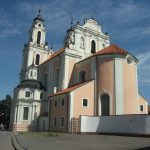
It was built by the Benedictine Sisters near their convent. It acquired its present-day appearance after a great fire in Vilnius in 1737. The church has a rich interior decorated with stucco mouldings and artificial marble. Today the church is restored and adapted for concerts. It also hosts the International Christopher Summer Music FestivalFlanking the church on Vilniaus Street, a particularly elegant Chapel of Providence was erected in 1641 and rebuilt in 1746The single-nave church has 9 magnificent Late Baroque altars and a pulpitAll photos are copyrighted by Vladislav B. Sotirovic© Vladislav B. Sotirovic 2018
Continue Reading
Town Hall Square has been a market place since very early times, and it today dominated by the Town Hall which was formerly a court, with the basement being used as prison cellsThe Town Hall back-side. The present building was constructed between 1785 and 1799 by the Classical architect Lithuanian Laurynas Stuoka-Gucevičius The square in front of the Town Hall is the venue for an annual three-day crafts market on the weekend closest to March 4th, St. Casimir's DayAll photos are copyrighted by Vladislav B. Sotirovic© Vladislav B. Sotirovic 2020
Continue Reading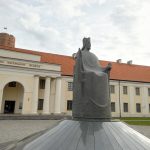
Originally, the Vilnius Lower Castle's jurisdictional court and administration was housed in this building during the 17th and 18th centuries. In the 18th century it was reconstructed into a weapons store-house and militarry baracks. Today, the museum holds the most important archaeological, historical, and ethnic cultural collections of Lithuania that cover Lithuania's history from the Stone Age to the present-day. In front of the building is a monument to King Mindaugas In 2003, a monument to King Mindaugas was erected in the square in front of the building of New Arsenal (today Lithuanian National Museum)In the 19th century, an entrance in the Classical style was biultAll photos are copyrighted by Vladislav B. Sotirovic© Vladislav B. Sotirovic 2018
Continue Reading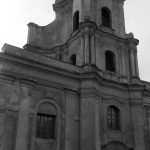
The Augustines established themselves on this site in Vilnius Old Town after 1661. The monastery date from the late 18th centuryIn 1833-1842 the monastery housed the Vilnius Spiritual Academy. In 1859 it was converted into a Russian Orthodox Church of St. AndrewIn 1918 the church was returned to the Roman Catholics and renovated. After WWII the interior was destroyed during the installation of a ferroconcrete ceiling; the church was used as a warehouse in the Soviet timeAll photos are copyrighted by Vladislav B. Sotirovic© Vladislav B. Sotirovic 2019
Continue Reading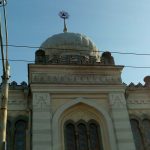
The architect Michail Prozorov designed the rectangular building with three-walled apse according to the requirements of Karaim liturgyThe oriental-style exterior has a protruding central part and the onion-shaped dome over it. The distinctive exterior of the building emphasises its unique purposeIn 1949, the Kenessa, along with many other sacral buildings, was nationalized and closed down. In 1988, it was returned to the Karaim community. In 1993, it was re-consecrated and has remained open sinceAll photos are copyrighted by Vladislav B. Sotirovic© Vladislav B. Sotirovic 2020
Continue Reading
The church is inconspicuous from the street, as its façade does not face the streetThe 51 meter-tall dome can be seen from seven Old Town streetsThe Dominican Church of the Holy Spirit is one of the most magnificent churches in Vilnius. It is an excellent monument of high and late Baroque All photos are copyrighted by Vladislav B. Sotirovic© Vladislav B. Sotirovic 2018
Continue Reading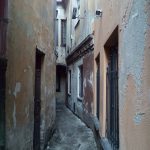
The entrance to the Knight Street in Vilnius Old TownA courtyard after the end of the Knight StreetThe end of the Knight Street (followed by the courtyard)All photos are copyrighted by Vladislav B. Sotirovic© Vladislav B. Sotirovic 2021
Continue Reading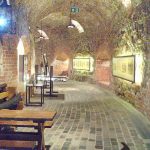
A semi-circular corridor of the Bastion of Vilnius, where cannons were lined up at embrasures, was called a casemate. A special platform with a parapet for heavy artillery was built on the terrace of the bastionA 48-m long, 2,8-m wide and 3,5 m high impressive tunnel leads from the tower to the underground casemate. Cannons brought to the tower would be rolled down this tunnelThe main part of the Bastion of Vilnius is the casemate. It is an underground horseshoe-shaped room for cannons. The casemate forms a semicircle around a 3-4 metre-high hill heightened with sand. From the outside the façade is 8 m high, and sloping, and is built from bricksAll photos are copyrighted by Vladislav B. Sotirovic© Vladislav B. Sotirovic 2020
Continue Reading
A geographical centre of Europe - 25 km far from Vilnius. From 2015 Summer You will get a special Certificate that you have visited the Geographical center of Europe. Don't miss the chance to get it for freeThe Baltic States of Europe - Estonia, Latvia & LithuaniaVytis (The Knight) - The Coat of Arm of both historical Grand Duchy of Lithuania and present-day the Republic of LithuaniaOrigins of images: Facebook, Twitter, Wikimedia, Wikipedia, Flickr, Google, Imageinjection & Pinterest.Read our Disclaimer/Legal Statement!Donate to Support UsWe would like to ask you to consider a small donation to help our team keep working.
Continue Reading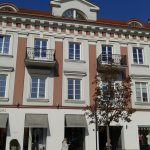
A plaque above the entrance to the courtyard of the house in which Mark Antokolski lived in the Old Town of VilniusThe inner courtyard of the house in which Mark Antokolski livedMark Antokolski returned to Vilnius every summer while studying at the Imperial Art Academy in St. Petersburg in the years 1862-1868All photos are copyrighted by Vladislav B. Sotirovic© Vladislav B. Sotirovic 2019
Continue Reading
The museum is located in the north wing of the Old Arsenal and looks at Neolithic, Bronze and Iron Age Lithuania followed by the various tribes that inhabited the area until they combined to form a state in the 13th centuryThe museum displays object found in burial sites, such as pins, amulets, rings, brooches, knives or necklaces. You can as well as see regional dressses of Lithuanian tribes before the formation of the state in the mid-13th century The museum shows a hoard of some 16.000 17th-century coins found in 1999 in Vilnius. It is believed that the hoard may have been hidden during the 1700-1721 Great Northen War. Nevertheless, it is the largest collection of old coins to be found in Lithuania All photos are copyrighted by Vladislav B. Sotirovic© Vladislav B. Sotirovic 2020
Continue Reading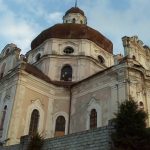
The Church of the Heart of Jesus is a significant monument of Baroque (finished in 1756). It is the only Roman Catholic church in Lithuania to be built along a Greek Orthodox cross designThe church has a large octagonal cupola (dome) and a very reach the elegant exterior. The interior is no less magnificent, although it was severely damaged during the Soviet timeAfter 1945, a prison was established in the church and convent buildings. The church interior and the plan of the convent buildings were transformed. After 1990, the sacral buildings are returned to their former ownersAll photos are copyrighted by Vladislav B. Sotirovic© Vladislav B. Sotirovic 2020
Continue Reading
One of Baroque gates of the Sapieha ParkAmong the surviving details of the palace are Baroque façades with stucco relief works by Pietro Perti and three Baroque gates. The park is the only one in Vilnius Vilnius with features of a regular Baroque park The palace and the gates were decorated with sculptures and frescoes created by masters who had worked in the Church of St. Peter and St. Paul and St. Casimir's Chapel of the Cathedral Basilica in VilniusAll photos are copyrighted by Vladislav B. Sotirovic© Vladislav B. Sotirovic 2019
Continue Reading
Cathedral Basilica of St. Stanislaus and St. Vladislaus in Vilnius. Today the Cathedral Basilica is in the Classicist style as it was redisigned in 1783-1801 by Lithuanian architect Laurynas Gucevičius Baroque-style Cathedral's St. Casimir's Chapel built in 1610-1632 for holding the remains of St. Casimir (declared in 1604 by Pope Clemens VIII as the saint Cathedral Basilica Bell Tower. It is rebuilt tower that was part of the defensive wall that encircled the Lower CastleSaveAll photos are copyrighted by Vladislav B. Sotirovic© Vladislav B. Sotirovic 2018
Continue Reading
The Galera Gallery in the Užupis Art Incubator also operates there, where exhibitions of various kinds of art are organizedGalera of Užupis is an Alternative art gallery. That is a place similar to the former Christiana district in Copenhagen in DenmarkThe Užupis district and its Art Incubator are separated from the Old Town in Vilnius on three sides by the River Vilnia, and by a high hill on the fourth sideAll photos are copyrighted by Vladislav B. Sotirovic© Vladislav B. Sotirovic 2020
Continue Reading
Three crosses are believed to have first been erected on this hill above the Old Town of Vilnius in the 17th century to commemorate a group of 14 Franciscan monks from a nearby monastery who were martyred in the 14th century The monument has changed several times. The present one was built in 1989 to replace one that had been removed by the Soviet authorities in the 1950sOne of the best panoramic views of the Old Town of Vilnius is offered from the Hill of Three CrossesAll photos are copyrighted by Vladislav B. Sotirovic© Vladislav B. Sotirovic 2020
Continue ReadingThe Bastion of the Vilnius Defensive Wall (II)
Vilnius Old Town Hall
Church of St. Anne
King Mindaugas Monument
Church of St. Catherine and Former Benedictine Monastery
Around Town Hall Square in Vilnius
Lithuanian National Museum (New Arsenal) and a Monument to King Mindaugas
Church of Blessed Mary the Comforter and the Augustine Monastery
The Kenessa of Vilnius – Karaite sanctuary
Church of the Holy Spirit & Former Dominican Monastery (Exterior)
The Knight Street in Vilnius
The Bastion of the Vilnius Defensive Wall (III)
Lithuania – Geographical Center of Europe
Mark Antokolski House in Vilnius
The Museum of Archaeology of Lithuania
Church of the Heart of Jesus and the Convent of the Visitationists in Vilnius
Sapieha Estate and Park
Cathedral Basilica of St. Stanislaus and St. Vladislaus
Užupis Art Incubator (2)
The Hill of Three Crosses



